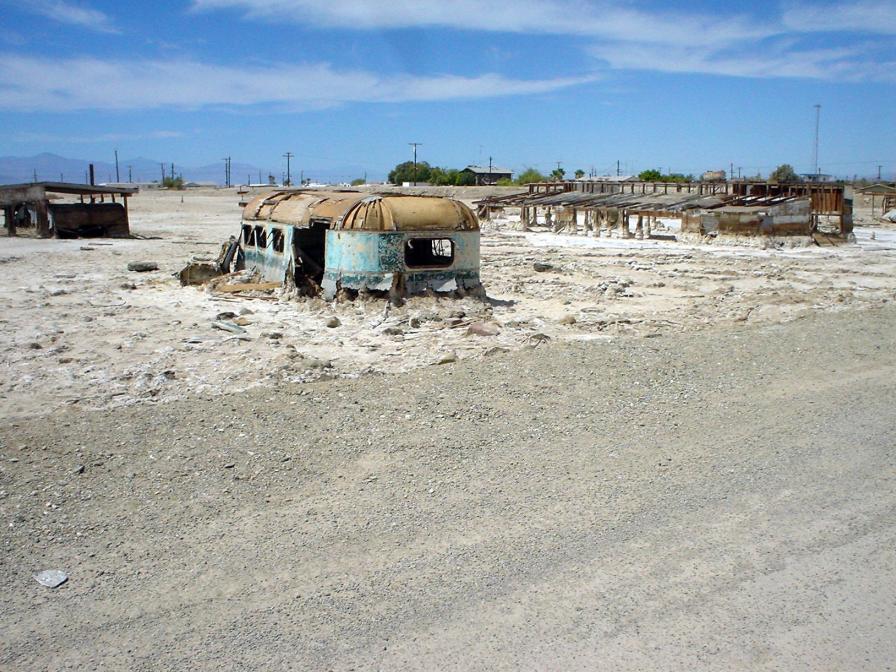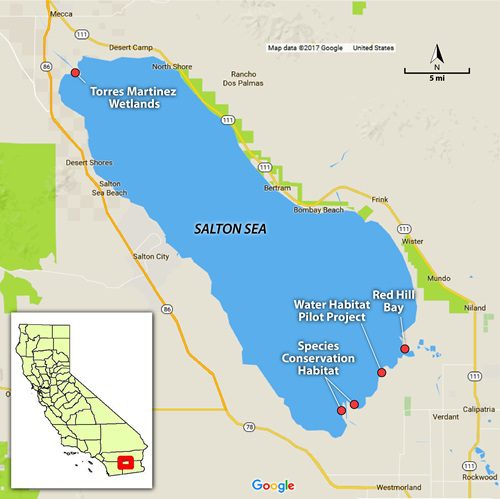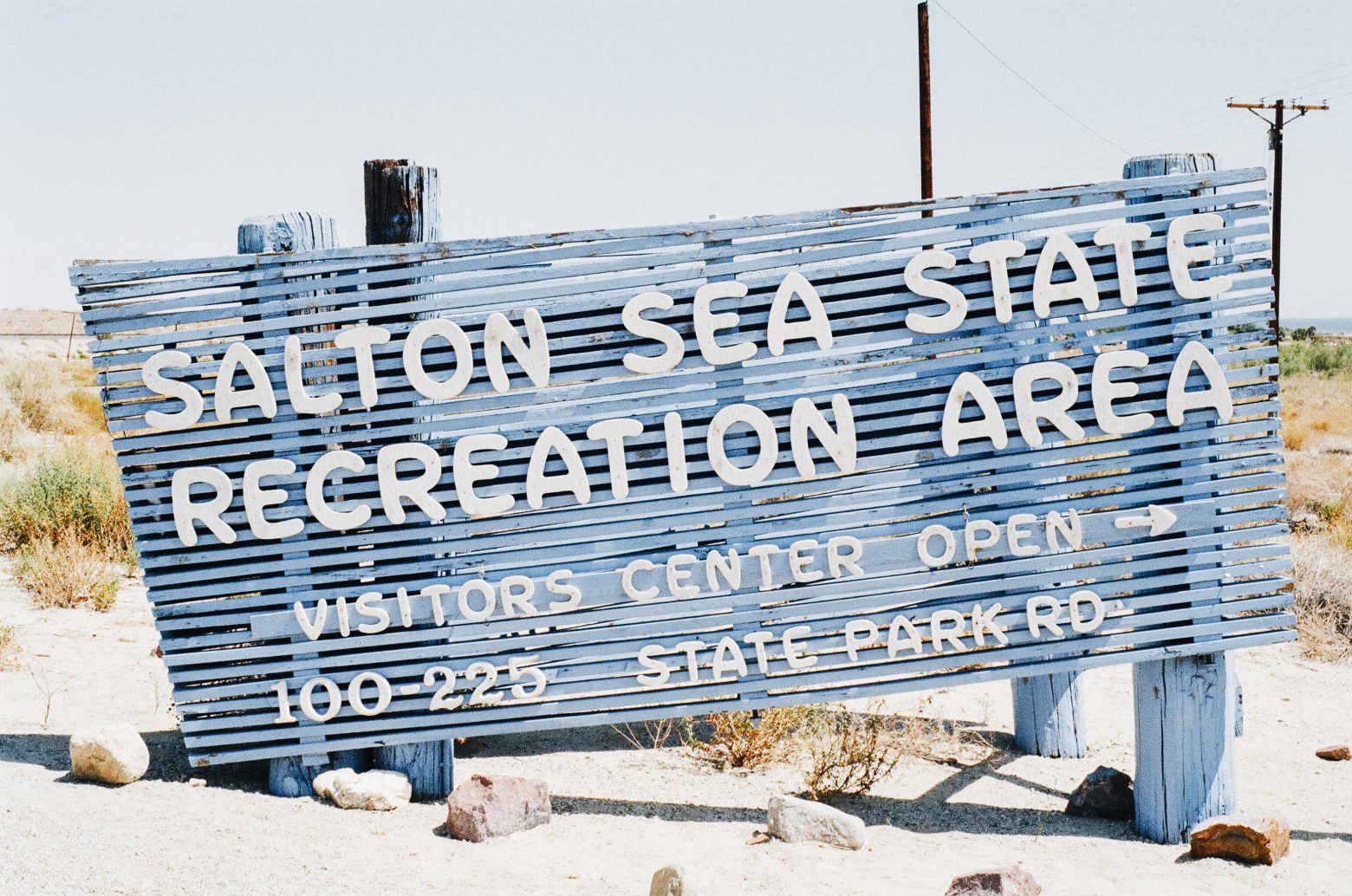The Salton Sea is an inland body of water located in California’s Imperial Valley. Its birth in 1905 was accidental, created when flood waters from the Colorado River gushed through irrigation canals and poured into a depression that was once a prehistoric lake. Over a short span, the Salton Sea became the Golden State’s largest lake, boasting a surface area of 343 square miles.
According to the California Department of Water Resources , “The Salton Sea is California’s largest lake, extending from the Coachella Valley into Imperial Valley. It is 35 miles long and 15 miles wide. Though saltier than the ocean, the Salton Sea supports an abundance of fish and is a food source for millions of migratory birds on the Pacific Flyway. Over the last several decades, water levels at the Salton Sea have declined and salinity concentrations have increased due to climate fluctuations, agricultural conservation measures, cropping practices, and reduced inflows from Mexico. Declining lake levels create more particulate air pollution that threatens important bird habitat and poses public health risks.”
, “The Salton Sea is California’s largest lake, extending from the Coachella Valley into Imperial Valley. It is 35 miles long and 15 miles wide. Though saltier than the ocean, the Salton Sea supports an abundance of fish and is a food source for millions of migratory birds on the Pacific Flyway. Over the last several decades, water levels at the Salton Sea have declined and salinity concentrations have increased due to climate fluctuations, agricultural conservation measures, cropping practices, and reduced inflows from Mexico. Declining lake levels create more particulate air pollution that threatens important bird habitat and poses public health risks.”

 , June 2021, US Fish and Wildlife Service
, June 2021, US Fish and Wildlife ServiceFrom Thriving Oasis to Environmental Hazard.
For several decades, the Salton Sea was a haven for tourists and anglers. It was a freshwater lake teeming with fish and embraced by a serene landscape. However, climate change, evaporation, and agricultural runoff combined to cast a shadow over this once-thriving oasis. The water started receding, and toxins and hazardous elements such as arsenic and selenium in the lakebed became exposed. Algae blooms and bacteria proliferated in the toxic environment, contributing to the degradation of the lake.
According to State Senator Steve Padilla (D-San Diego) , experts estimate that by 2030, the sea will lose more than half of its volume, which will result in approximately a 3-foot decline in the water level.
, experts estimate that by 2030, the sea will lose more than half of its volume, which will result in approximately a 3-foot decline in the water level.
Impact on Surrounding Communities.
Padilla says that the Salton Sea’s deterioration has dire consequences for the nearby communities, primarily inhabited by Latino agricultural workers. The exposure to airborne toxins has resulted in an alarming rate of hospitalization for children with asthma, which is double the state average. Moreover, Imperial County, which houses the Salton Sea, faces some of the country’s worst air quality challenges.
has dire consequences for the nearby communities, primarily inhabited by Latino agricultural workers. The exposure to airborne toxins has resulted in an alarming rate of hospitalization for children with asthma, which is double the state average. Moreover, Imperial County, which houses the Salton Sea, faces some of the country’s worst air quality challenges.

 .
.Uniting to Save the Lake: The Salton Sea Conservancy.
In response to the escalating crisis, numerous environmental justice groups have been pushing for remedial action. In February, Sen. Padilla introduced Senate Bill 583 (S.B. 583) , proposing the creation of the Salton Sea Conservancy. This organization would act as the central agency managing all conservation projects in the Salton Sea Region.
, proposing the creation of the Salton Sea Conservancy. This organization would act as the central agency managing all conservation projects in the Salton Sea Region.
“This is an environmental crisis that not only impacts the ecology of the region, but the people as well. Communities near the Salton Sea are at breaking point,” said Senator Padilla . He added, “By unifying all of the conservation projects surrounding the Sea, we can streamline efforts and bring about necessary change faster.”
. He added, “By unifying all of the conservation projects surrounding the Sea, we can streamline efforts and bring about necessary change faster.”

 , California Department of Water Resources
, California Department of Water ResourcesGaining Support and Momentum.
“The Salton Sea needs long-term management that is strongly guided by local voices and leadership,” said Frank Ruiz, Audubon California’s Salton Sea Program Director. “Audubon greatly appreciates Senator Padilla’s leadership in authoring SB 583, which will create a conservancy that is governed by a board of locally-selected leaders in partnership with state officials. The new Salton Sea Conservancy will be a conduit for funding projects at the Sea in ways that are responsive to local needs.”
“We are excited to have a new partner in Senator Padilla, reinforcing our Salton Sea restoration efforts,” said Assemblymember Eduardo Garcia , joint author on the legislation. “A Salton Sea Conservancy creates a necessary avenue to finance operation and maintenance of restoration projects and ensure a healthier, more sustainable future for our sea and surrounding communities.”
, joint author on the legislation. “A Salton Sea Conservancy creates a necessary avenue to finance operation and maintenance of restoration projects and ensure a healthier, more sustainable future for our sea and surrounding communities.”
Progress in Legislation.
S.B. 583 recently passed the California Assembly Natural Resources Committee with bipartisan support on a 10-0 vote and is now moving to the Assembly Appropriations Committee. If enacted, the Salton Sea Conservancy will empower local communities and stakeholders in the restoration process, thereby addressing the urgent ecological and public health issues faced by the region.
recently passed the California Assembly Natural Resources Committee with bipartisan support on a 10-0 vote and is now moving to the Assembly Appropriations Committee. If enacted, the Salton Sea Conservancy will empower local communities and stakeholders in the restoration process, thereby addressing the urgent ecological and public health issues faced by the region.
The Salton Sea stands at a critical juncture. With unified efforts and the potential formation of the Salton Sea Conservancy, there is hope that this once-flourishing lake can be restored, and the surrounding communities can rebuild a healthier and more sustainable environment.
Top Image: A sign pointing to the Salton Sea State Recreation Area (2016), via Wikimedia Commons
(2016), via Wikimedia Commons

